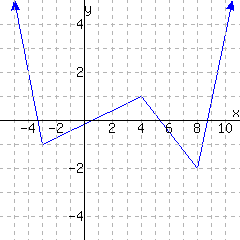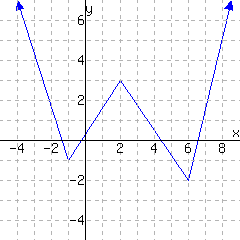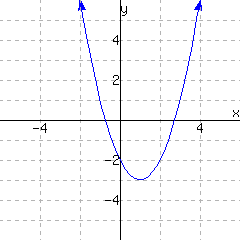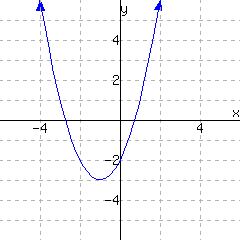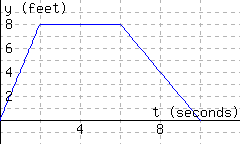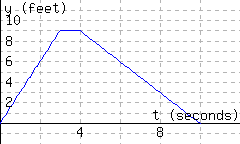To start, we'll note that this function will open downward, as the leading coefficient is negative.
To find the \(y\)-intercept, we'll evaluate \(j(0)\text{:}\)
\begin{align*}
j(\substitute{0})\amp=-2(\substitute{0})^2+6(\substitute{0})+8\\
\amp=8
\end{align*}
The \(y\)-intercept is \((0,8)\text{.}\)
Next, we'll find the horizontal intercepts by setting \(j(x)=0\) and solving for \(x\text{:}\)
\begin{align*}
-2x^2+6x+8\amp=0\\
-2(x^2-3x-4)\amp=0\\
2(x-4)(x+1)\amp=0
\end{align*}
\begin{align*}
x-4\amp=0\amp \text{or}\amp\amp x+1\amp=0\\
x\amp=4\amp \text{or}\amp\amp x\amp=-1
\end{align*}
The \(x\)-intercepts are \((4,0)\) and \((-1,0)\text{.}\)
Lastly, we'll determine the vertex. Noting that \(\substitute{a=-2}\) and \(\lighthigh{b=6}\text{,}\) we have:
\begin{align*}
x\amp=-\frac{\lighthigh{b}}{2\substitute{a}}\\
x\amp=-\frac{\lighthigh{6}}{2(\substitute{-2})}\\
\amp=1.5
\end{align*}
Using the \(x\)-value \(\substitute{1.5}\) to find the \(y\)-coordinate, we have:
\begin{align*}
j(\substitute{1.5})\amp=-2(\substitute{1.5})^2+6(\substitute{1.5})+8\\
\amp=12.5
\end{align*}
The vertex is the point \((1.5,12.5)\text{,}\) and the axis of symmetry is the line \(x=1.5\text{.}\)
We're now ready to graph this function. We'll start by drawing and scaling the axes so all of our key features will be displayed as shown in Figure 9.4.30. Next, we'll plot these key points as shown in Figure 9.4.31. Finally, we'll note that this parabola opens downward and connect these points with a smooth curve, as shown in Figure 9.4.32.
Figure 9.4.30 Setting up the grid.Figure 9.4.31 Marking key features.Figure 9.4.32 Completing the graph.

